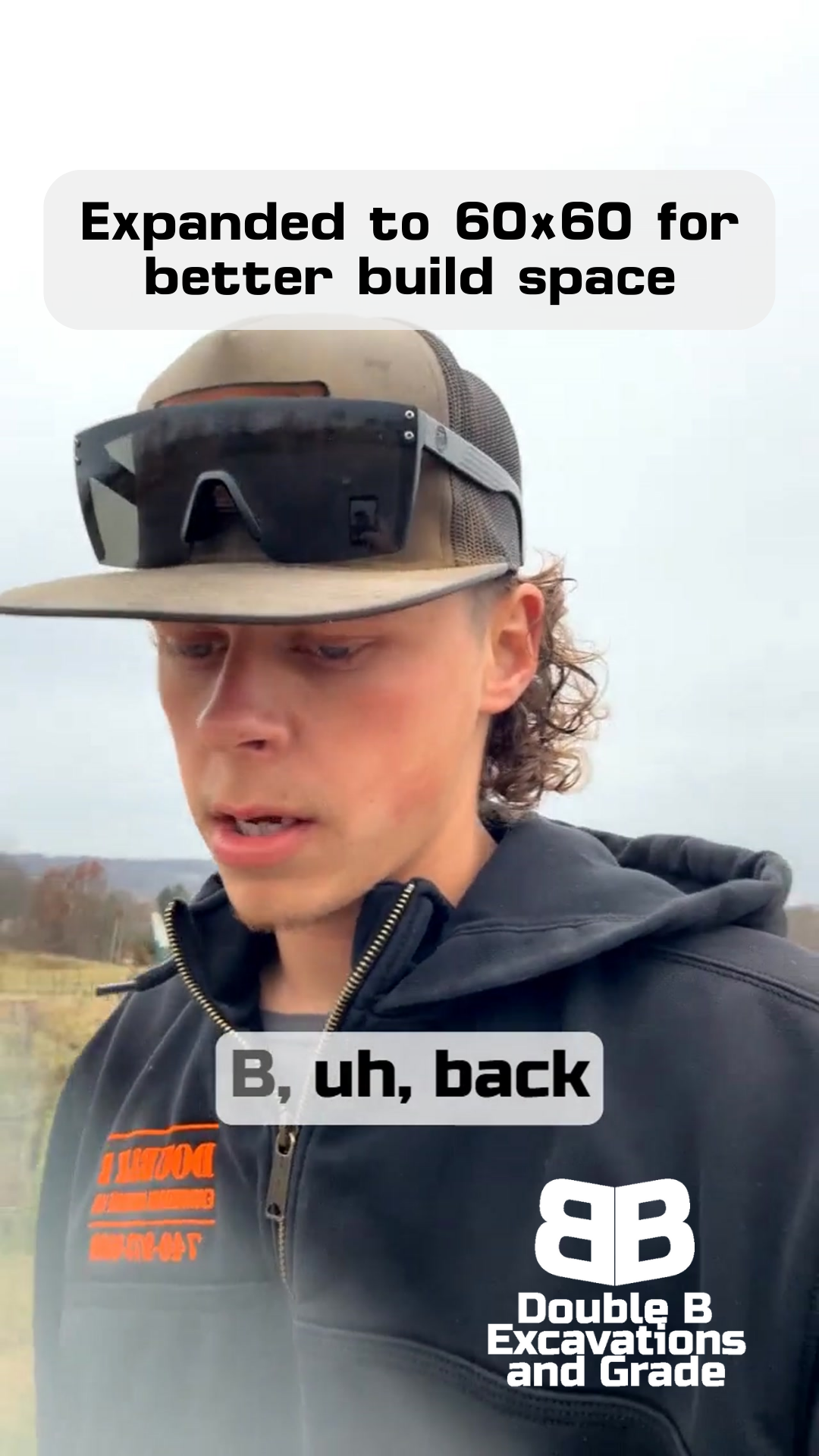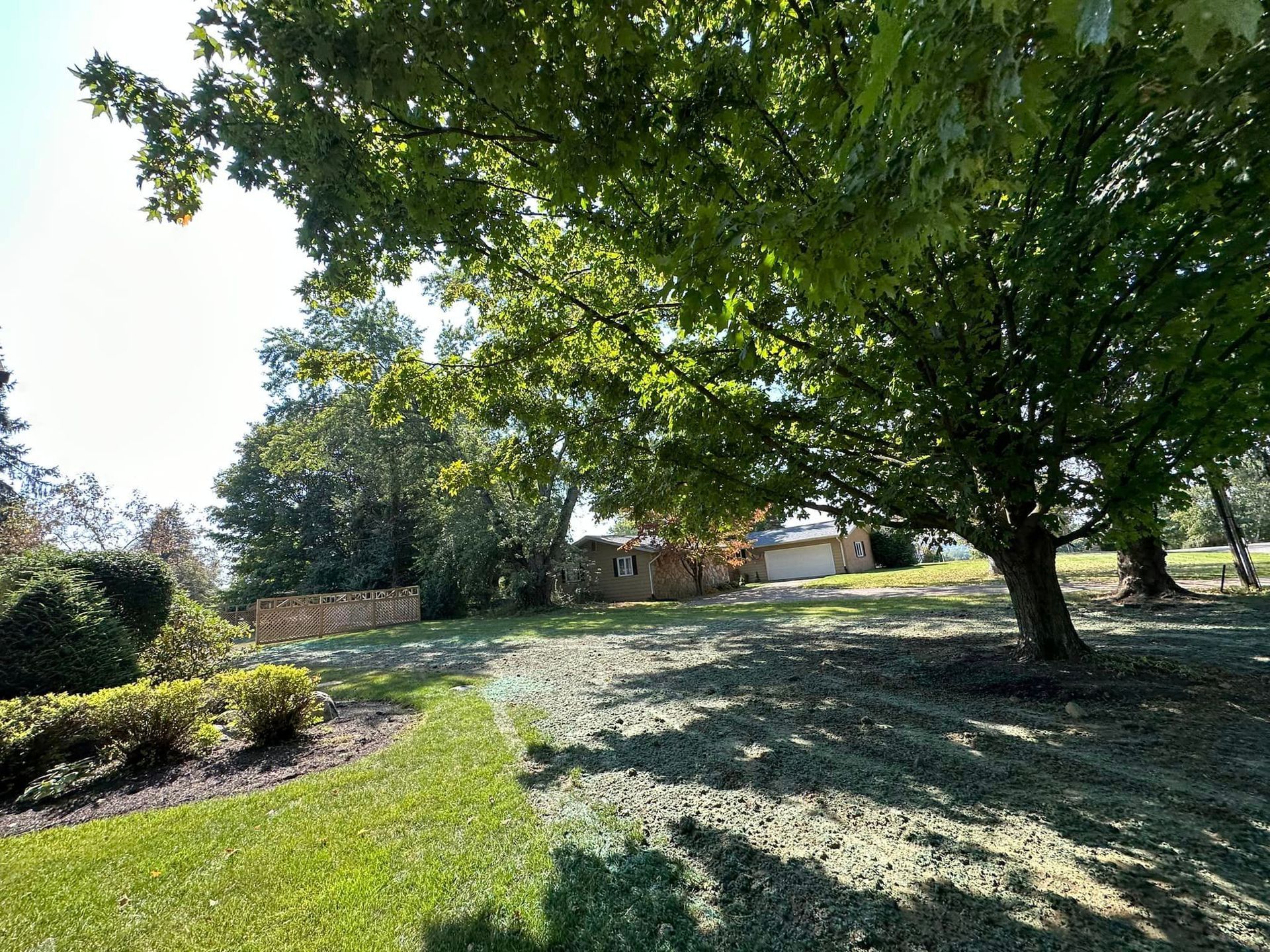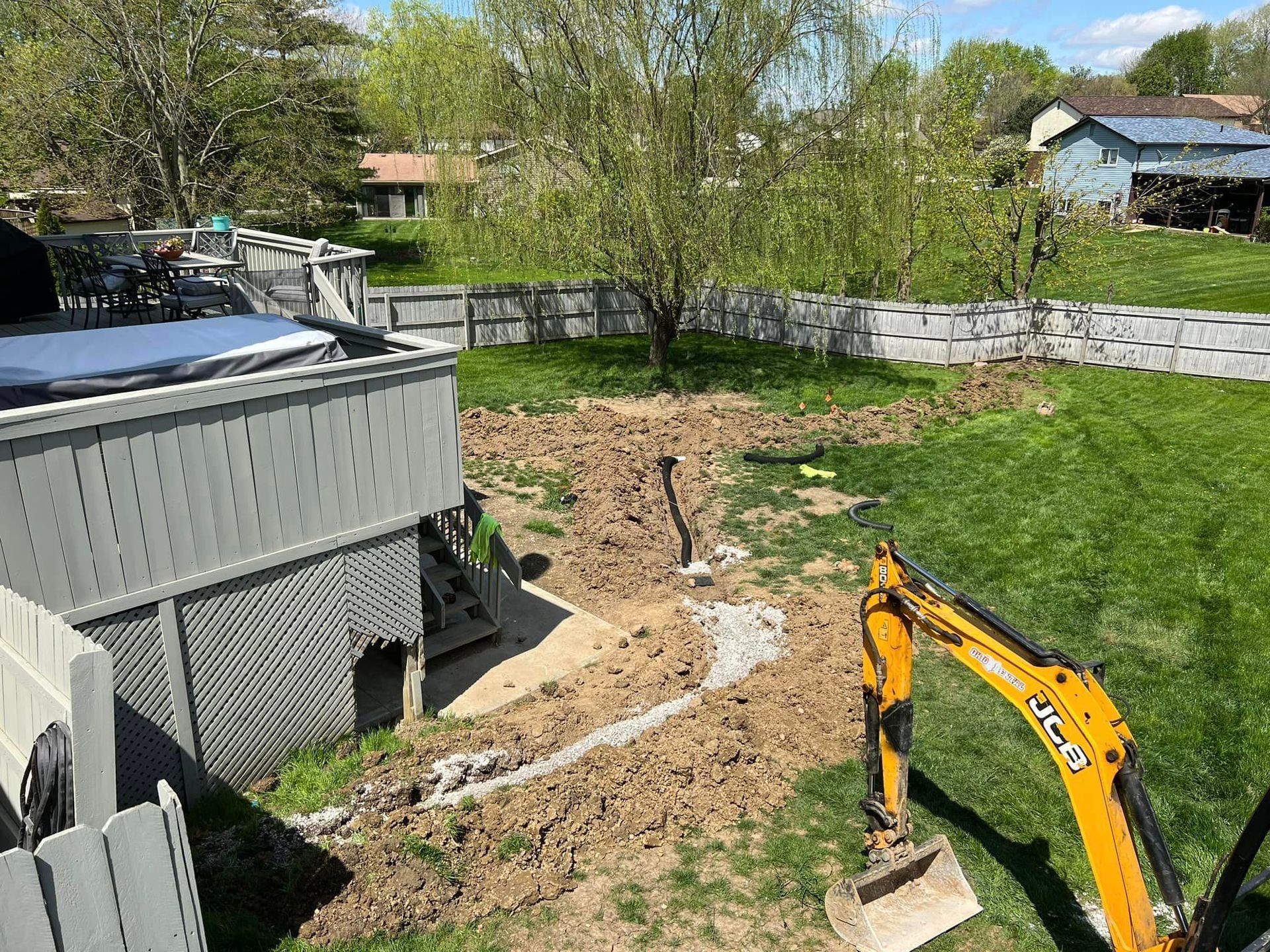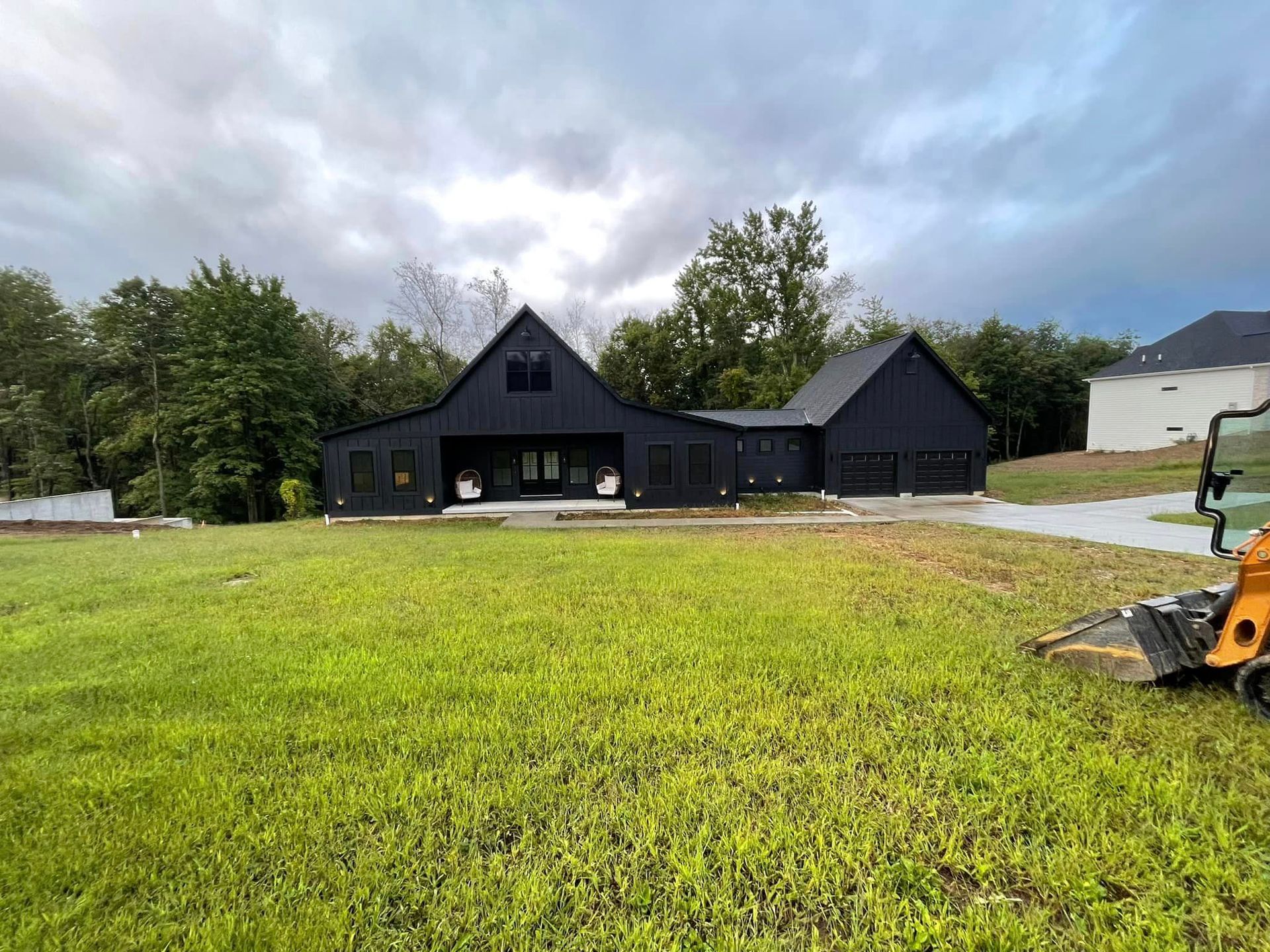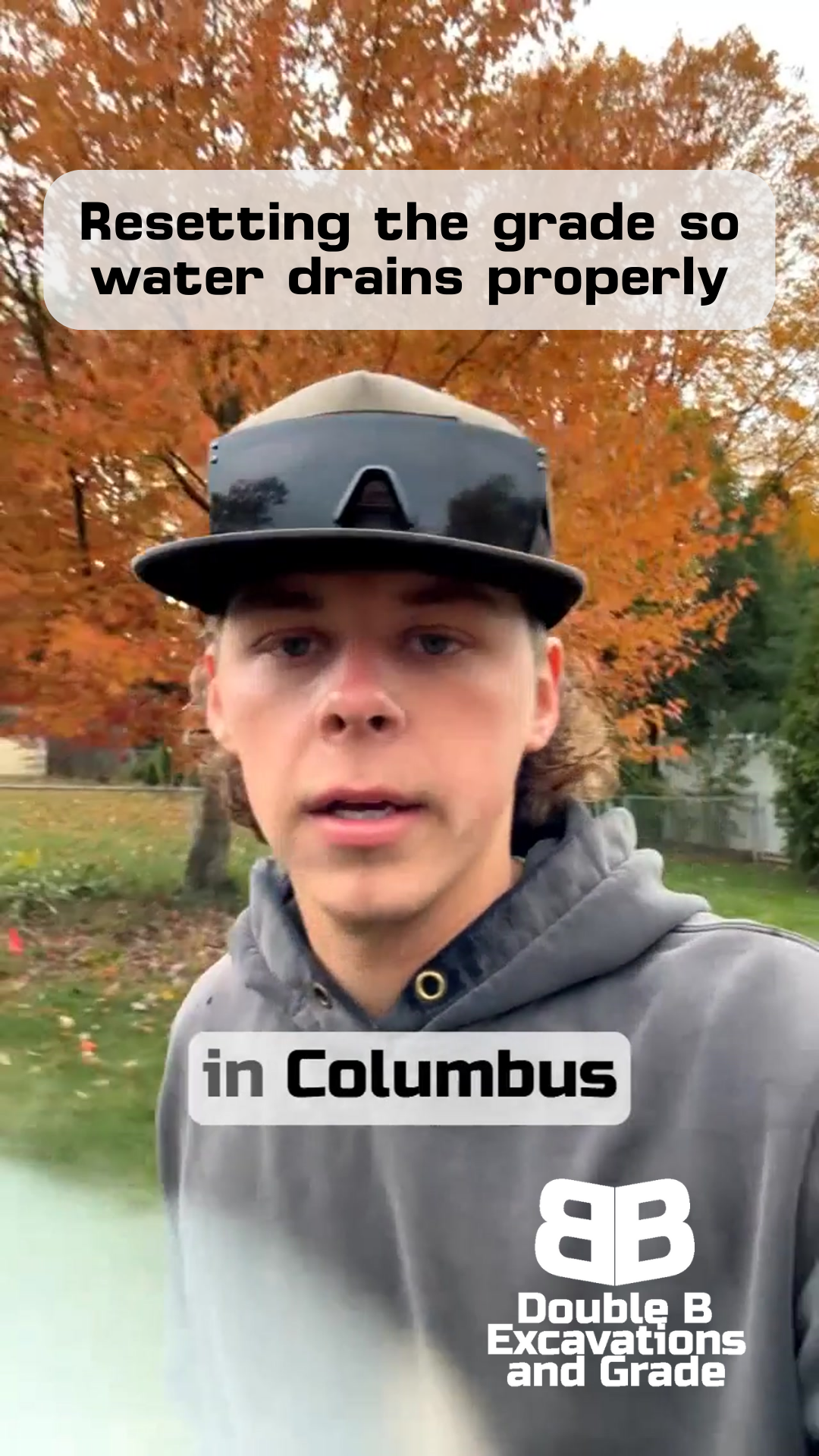Metal vs. Plastic Culverts: What Every Ohio Property Owner Should Know
Double B Excavations & Grade LLC
The Hidden Cost of Traditional Choices
WHY YOUR CULVERT MATERIAL CHOICE MATTERS MORE THAN YOU THINK
Out in Gahanna this morning, we uncovered a problem we see all too often: a completely rusted-out metal culvert that's failing to do its job.
Most property owners don't think twice about what their culverts are made of until there's a problem.
By then, it's usually an expensive emergency repair rather than a planned improvement.
When it comes to culverts, most people assume metal is the strongest choice.
After all, that's what we've used for decades, right?
But here in Ohio, we've learned something important: sometimes the traditional choice isn't the best choice.
What worked thirty years ago isn't always what works best today.
Welcome to Double B!
The Problem with Metal Culverts
Let me show you exactly what we found in Gahanna. The bottom of this galvanized metal pipe has completely rusted away. This isn't some ancient installation either - this is what happens to metal culverts in our Ohio climate faster than most people expect.
Here's why this matters: Ohio throws everything it can at these pipes. We get freeze-thaw cycles that make the ground shift. We deal with constant moisture, whether it's rain, snow, or groundwater. Add in the weight of vehicles and equipment passing overhead, and you're asking a lot from these culverts.
The biggest issue we see with metal culverts is they don't handle these conditions well over time. That galvanized coating? It's great at first, but it can't stand up to constant moisture. Once rust starts, it's like a domino effect. The bottom rusts first (where water sits), then the sides start to go, and before you know it, you're looking at a collapsed driveway or a flooded yard.
What makes this tricky is you often can't see the problem until it's serious. The top of the pipe might look fine, but underneath, that metal is slowly wearing away. By the time you notice something's wrong, you're usually looking at a full replacement instead of a simple repair.
The Plastic Culvert Advantage
Here's where we get to the solution: double-wall plastic pipe. Now, I know what you might be thinking - plastic doesn't sound as strong as metal. But this isn't your typical plastic pipe. We're talking about heavy-duty, double-wall construction that's specifically designed for underground use.
Let me break down why we use this on every project now:
First off, it simply can't rust. That might sound obvious, but it's a game-changer in our Ohio weather. While metal fights a losing battle against moisture, plastic just shrugs it off. But there's more to it than just being rust-proof.
This double-wall plastic actually flexes with the ground as it moves through freeze-thaw cycles. Think about it like this: when you're dealing with Ohio winters, you want something that can move a little bit without breaking. Metal tries to stand rigid against these forces - and eventually loses. Plastic pipe works with the ground instead of fighting against it.
Cost Comparison Over Time
Let's talk dollars and sense. I won't sugar-coat it - quality plastic pipe isn't the cheapest option upfront. But here's where the math gets interesting: you're not just buying a pipe, you're buying peace of mind for the next couple decades.
With metal culverts, we're often back within 10-15 years for replacement. Sometimes sooner, depending on conditions. Each replacement means:
- Digging up your driveway or yard
- Hauling away the old pipe
- Installing new materials
- Rebuilding everything above it
Now compare that to a properly installed plastic culvert. We're seeing these last 20+ years with minimal maintenance. No rust, no collapse, no emergency calls. When you factor in the cost of multiple replacements and repairs for metal, plus the hassle of dealing with unexpected failures, plastic quickly becomes the smarter investment.
Plus, there's another cost people often forget: what happens when a culvert fails suddenly? Water damage, erosion, emergency repairs - these aren't just expensive, they're stressful. With plastic, you're dramatically reducing these risks.
Making the Right Choice
If you're looking at installing or replacing a culvert on your property, here's what you need to know. First, don't just focus on the price tag - focus on the long-term solution. Ask your contractor these questions:
- What material are they using and why?
- How long do they expect it to last?
- What's their experience with different materials?
- Do they offer any guarantees on their work?
Here's a tip from years of experience: if a contractor tries to sell you on metal culverts without discussing alternatives, that's a red flag. They might be stuck in the "that's how we've always done it" mindset, or they might be trying to save money at your expense.
In Gahanna today, we're not just replacing a failed culvert - we're upgrading to a system that'll serve this property for decades. That's the kind of forward thinking every Ohio property owner deserves.
Closing
Look, we get it - culverts aren't the most exciting thing to think about. But they're one of those critical parts of your property that you really notice when something goes wrong. The choice between metal and plastic might seem small now, but it can have big consequences down the road.
Looking Forward
Whether you're dealing with a failing culvert like our Gahanna project, or you're planning new construction, taking the time to make the right choice now saves headaches later. That rusted-out metal pipe we found this morning? That's someone else's quick fix turning into your expensive problem.
Need help evaluating your property's culverts? We're always happy to take a look and give you honest feedback about what we find. Because at Double B, we're not just fixing today's problems - we're preventing tomorrow's headaches.
